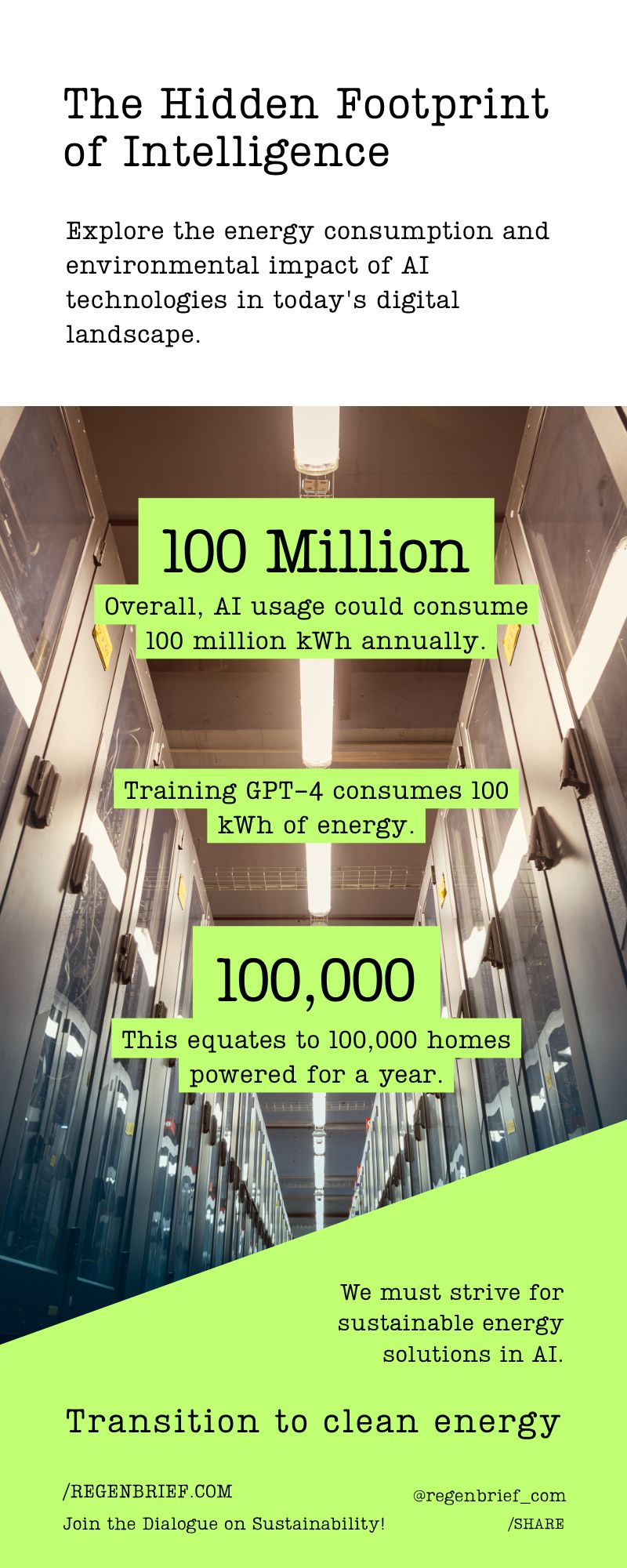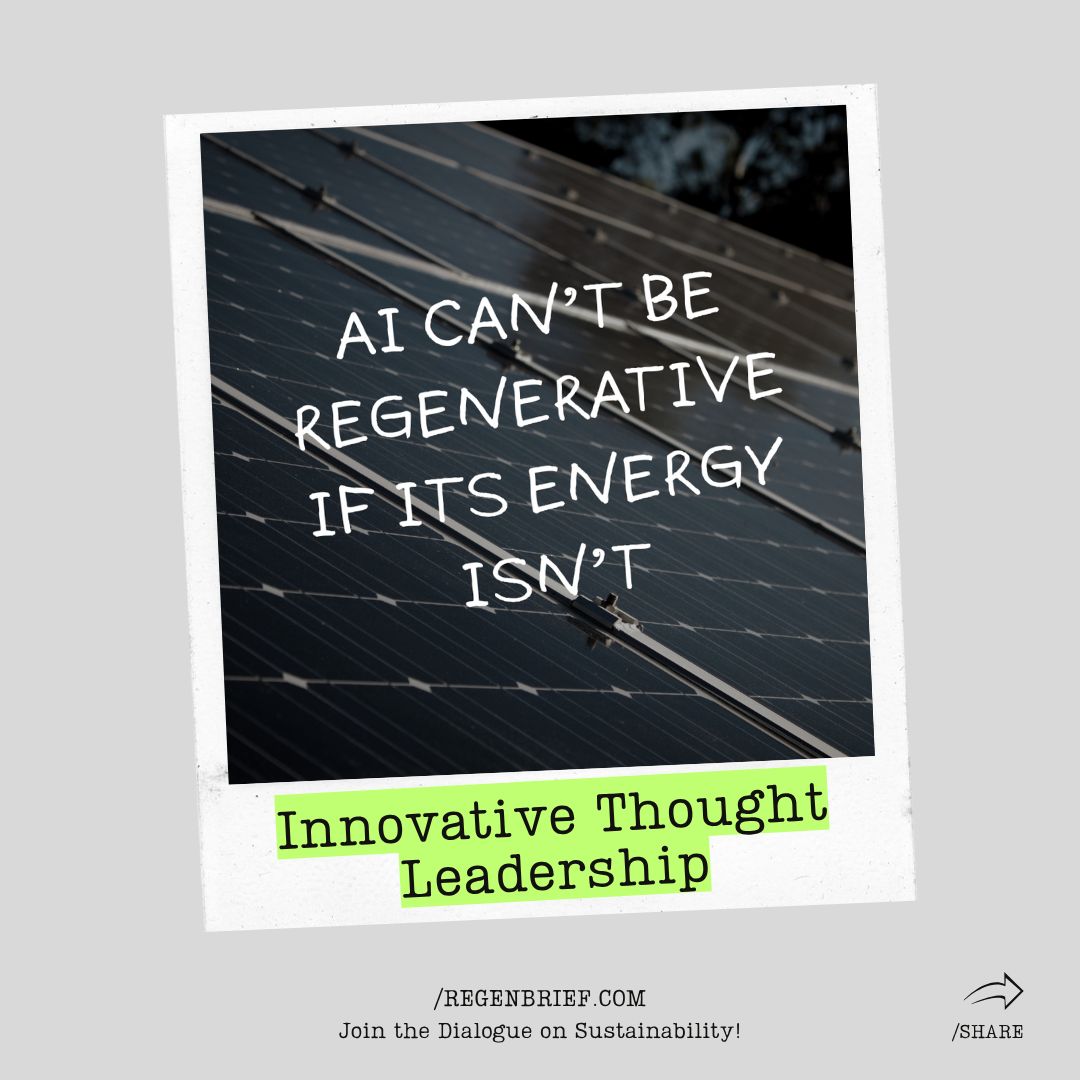- The Regenerative Brief
- Posts
- AI Will Reshape Everything — But Who’s Powering It?
AI Will Reshape Everything — But Who’s Powering It?
Why the Future of Artificial Intelligence Depends on the Future of Energy
“We do need energy breakthroughs. We’ll need way more power than we currently have, by a lot. I think we still don’t appreciate the energy needs of this technology.”
The real challenge isn’t AI — it’s the infrastructure beneath it.
We’re scaling intelligence at an unprecedented pace. But without matching that with clean, resilient energy systems, we risk building our future on an outdated, fossil-fueled foundation.
AI can drive climate solutions, efficiency, and better decision-making — but only if the energy behind it is as smart as the models themselves.
 |
|
AI needs |  |
Here’s what’s being overlooked:
AI workloads often default to non-renewable grids in regions with the cheapest power
AI data centers use massive amounts of water for cooling — even in drought-stricken areas
ESG, sustainability, and net-zero teams are excluded from AI procurement decisions
We can’t afford to repeat the last century’s pattern: progress that scales without planetary accountability.
Let’s compare:
ChatGPT’s infrastructure consumes more power daily than the world’s largest offshore wind farm generates
Meanwhile, major AI players continue to expand compute without integrated energy modeling
What if we flipped the metric?
Energy per insight becomes the KPI
AI infrastructure is audited for carbon intensity and grid mix
Model training is geofenced to renewable-powered zones
Governments tie AI tax incentives to clean-energy sourcing
This isn’t anti-AI. This is pro-future.
Your Move
If you're leading sustainability, technology, procurement, or infrastructure — here’s where to start:
Audit your AI stack — know where your compute is running and what powers it
Include AI workloads in Scope 2/3 reporting — particularly for enterprise SaaS tools
Procure regeneratively — require clean power declarations from vendors and cloud platforms
Raise the bar — advocate for sector-wide benchmarks like carbon-aware AI, water disclosure, and energy-intensity labeling
Signals from the Field
🌐 Sam Altman revealed that each ChatGPT prompt uses approximately 0.34 Wh of electricity and 0.000085 gallons of water — highlighting the urgent need to factor water and energy use into AI deployment decisions.
🖥️ Google DeepMind applied AI to reduce data center cooling energy by up to 40%, proving that AI can be used to optimize infrastructure when designed with intent.
📊 The IEA forecasts that data center electricity demand could reach up to 1,000 TWh annually by 2030 — largely driven by AI. That’s more than most countries consume today.
Let Us Help You Lead the Shift
Whether you're in strategy, ESG reporting, operations or innovation—
This is your moment to shape not just a better business, but a better future.
Curious where regeneration fits into your model?
Let’s explore the possibilities together.
This is more than sustainability.
This is life-centered design.
This is regeneration.